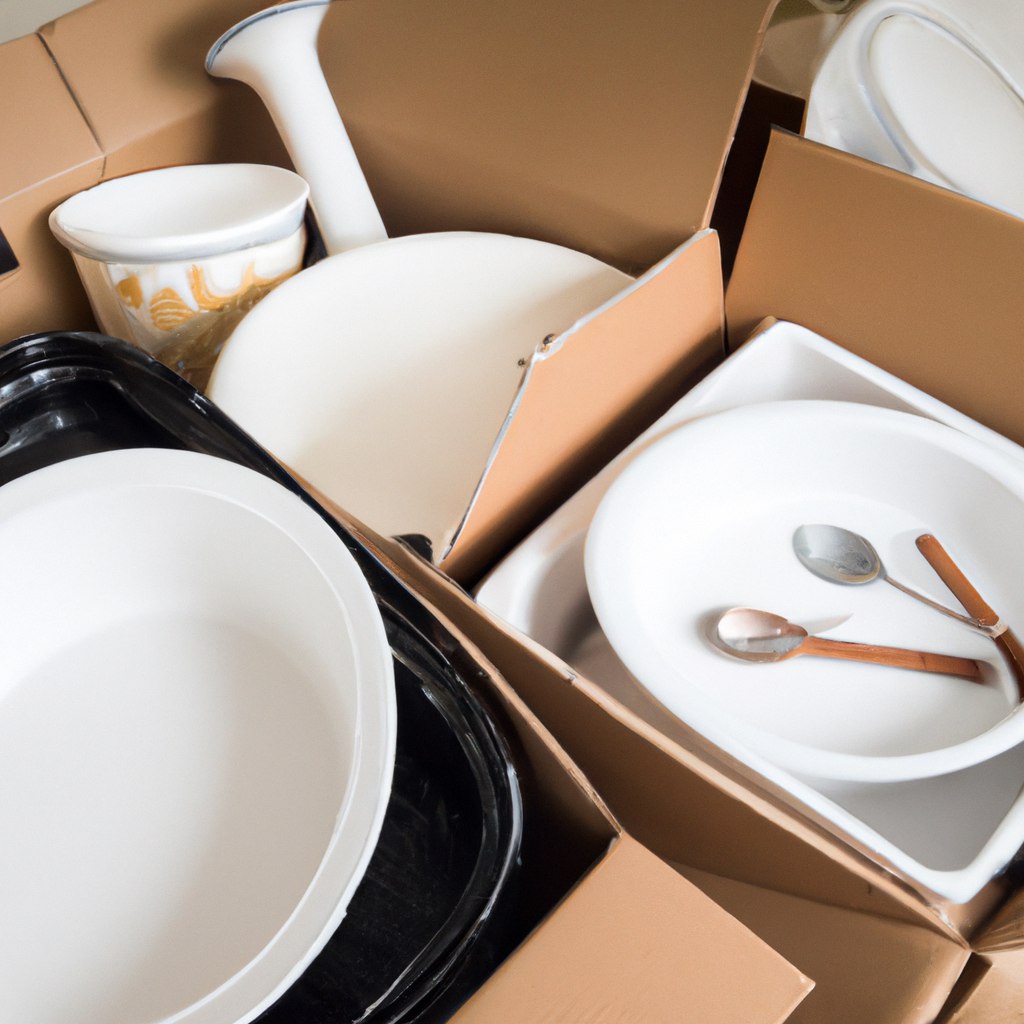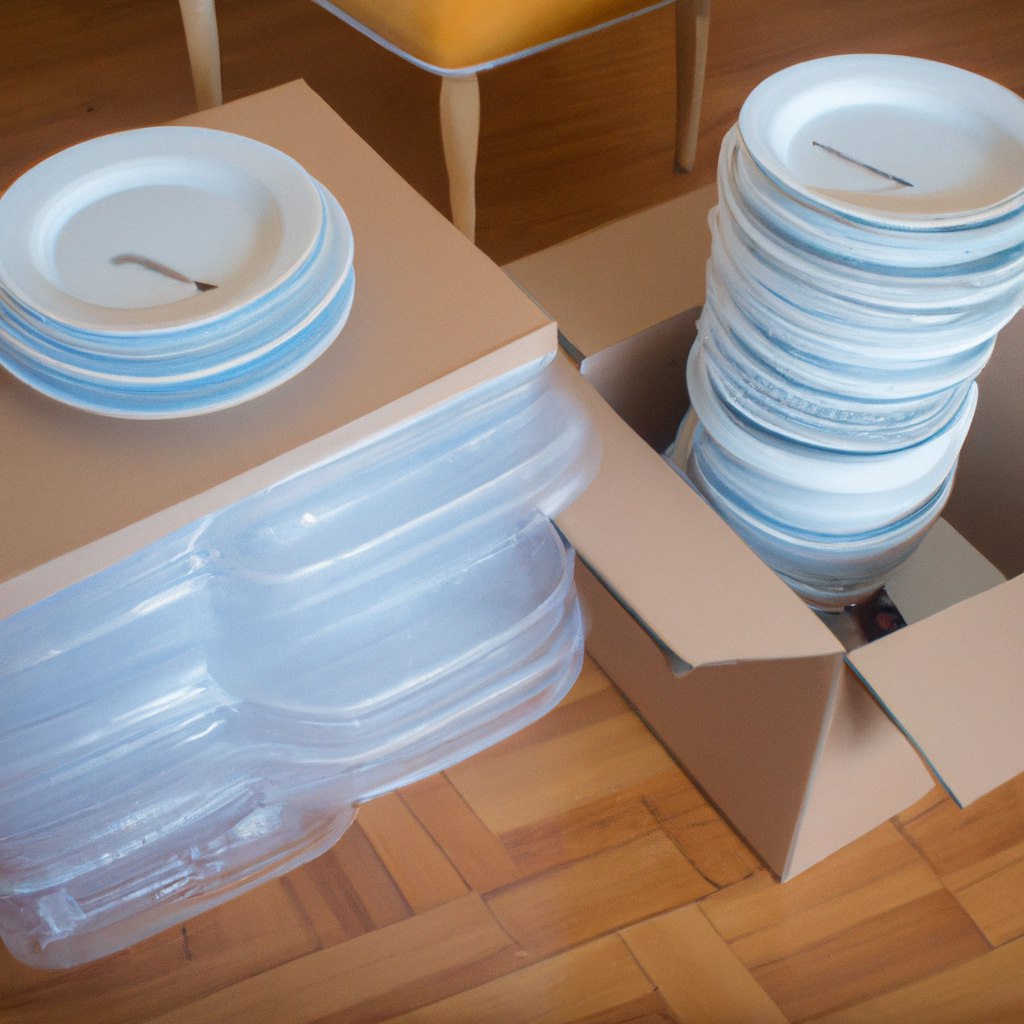Packing Hacks: Safely Transport Fragile Items During Your Move
Moving to a new home is an exciting endeavor, but it can also be stressful, especially when it comes to packing and transporting fragile items. Fragile belongings such as glassware, ceramics, electronics, and heirlooms require extra care and attention to ensure they arrive at your new destination intact.

Selecting the Right Packing Supplies
To start on the right foot, it is crucial to invest in high-quality packing supplies. Inferior materials may lead to inadequate protection for your fragile items.
Opt for durable cardboard boxes in various sizes, suitable for your different fragile items. Reinforced or double-walled boxes provide extra protection. When choosing boxes, consider the size and weight of your fragile items. Small and medium-sized boxes are ideal for packing heavy items like books or dishes, while larger boxes can accommodate lighter and bulkier items. For extremely fragile items, it is worth investing in specialty boxes designed to provide maximum protection, such as dish pack boxes or wardrobe boxes.
Purchase ample bubble wrap to wrap delicate items individually. This cushioning material helps absorb shocks and prevent damage during transit. Bubble wrap is a versatile packing material that provides an additional layer of protection against impacts and vibrations. Wrap each fragile item carefully, covering it entirely with bubble wrap. For extra cushioning, consider using multiple layers of bubble wrap for extremely delicate items.
Use packing paper to wrap items that may be sensitive to plastic, preventing potential chemical reactions. Unlike newspapers, packing paper is free of ink and won’t leave any marks or stains on your delicate belongings. It provides a clean and safe cushion for items like china, glassware, and other delicate collectibles.
While environmentally friendly alternatives are available, traditional packing peanuts are still effective for filling empty spaces in boxes and preventing movement. When using packing peanuts, be sure to fill the empty spaces in the boxes to minimize any shifting during transit. Ensure that your fragile items are well-secured within the box, and avoid overstuffing boxes to prevent pressure and potential damage.
Proper Packing Techniques
Knowing how to pack your fragile items correctly is crucial to their safety during the move. Start by wrapping each fragile item individually with bubble wrap or packing paper. Secure the wrapping with tape to keep it in place.
Individually wrapping fragile items is essential, as it provides an extra layer of protection and prevents items from clashing together during transportation. For delicate items with multiple components, such as lamps or disassembled furniture, wrap each piece separately to ensure their safety.
For glassware and ceramics, consider using dividers or inserts within boxes to prevent items from touching one another and reduce the risk of breakage. Dividers and inserts create compartments within the box, allowing you to pack multiple delicate items in a single container while keeping them separate. You can purchase pre-made dividers or use cardboard to create custom dividers that fit your specific items.
Clearly, mark boxes containing fragile items with “Fragile” and indicate which side should face up. This will ensure careful handling during loading and unloading. Labeling boxes is crucial for ensuring that movers and helpers handle them with the necessary care. Use bold, legible markers to write “Fragile” on multiple sides of the box, making it easily visible during the moving process.
Additionally, consider using color-coded labels to differentiate fragile items based on their degree of delicacy. For example, use red labels for extremely fragile items and yellow for moderately fragile ones.
Strengthen the bottom of the boxes with additional tape to prevent them from giving way under the weight of fragile items. The bottom of the box is often subjected to extra pressure, especially when it contains heavy or delicate items. Reinforce the bottom by applying several layers of sturdy packing tape along the seams to ensure it stays intact throughout the move.
Safe Loading and Unloading
Proper loading and unloading techniques are crucial to preserving your fragile belongings during transportation.
Consider hiring professional movers who have experience in handling delicate items. They have the expertise and equipment to load and unload your belongings safely. Professional movers are well-versed in packing and handling delicate items, ensuring they are appropriately secured during transit. Moreover, they have the necessary tools, such as dollies and moving straps, to lift and move heavy or bulky fragile items with ease.
When loading the moving truck or vehicle, place the boxes with fragile items on top of heavier, sturdier items. This prevents unnecessary pressure on delicate belongings. Stacking fragile boxes on top ensures they are less likely to bear the weight of other items, reducing the risk of damage. Additionally, it allows for easier access to fragile items when unloading, as they will be among the first to come off the truck.
Cover furniture with blankets to protect them from scratches and provide an extra layer of cushioning for fragile items placed nearby. Furniture blankets, also known as moving blankets, are thick, padded covers designed to protect furniture during transport. Place these blankets between delicate items and furniture or other heavy items to create a buffer zone that minimizes the risk of collisions and damage.
During unloading, take your time and handle each box with care. Avoid rushing, as haste can lead to accidents and damage. Unloading is just as critical as loading when it comes to protecting your fragile items. Instruct your movers or helpers to handle each box with care and avoid tossing or dropping them. If possible, designate a specific area for unloading fragile items to ensure they are unpacked and placed in your new home safely.
Specialty Item Considerations
Certain fragile items require unique packing and handling considerations. For TVs, computers, and other electronics, use the original packaging whenever possible. If not available, purchase specialized boxes designed to protect electronics during transportation. The original packaging for electronics is specifically designed to provide optimal protection during shipping. If you have the original boxes and packing materials, keep them for your move. Otherwise, look for electronics boxes that come with foam padding and inserts to secure your devices in place. Before packing electronics, take photos of the connections and cords to ensure easy reassembly at your new home. Label each cord and store them separately to avoid confusion during setup.
Cover paintings, frames, and mirrors with protective materials like bubble wrap and packing paper. Use mirror boxes for additional support and safety. Artwork and mirrors are delicate and susceptible to damage during transport. To protect them, wrap them in bubble wrap and secure it with packing tape. Place cardboard corner protectors on the frames to prevent them from getting damaged or chipped.
When packing artwork or mirrors, consider investing in mirror boxes. These specially designed boxes are adjustable and allow you to create a custom fit for your fragile items, ensuring they stay secure during transit. Fill any gaps in the box with packing paper or bubble wrap to prevent shifting. For valuable or irreplaceable artwork, consider seeking professional art packing services. These experts will use specialized materials and techniques to ensure your artwork is well-protected throughout the move.
Antique pieces need extra attention. Consider professional packing services for invaluable antiques to ensure they are well-protected. Antiques hold both sentimental and monetary value, making them irreplaceable. When it comes to packing and moving antiques, it is best to rely on the expertise of professional antique movers. These specialized services understand the intricacies of handling fragile and valuable items and use custom packing materials to ensure their safety.
If professional packing services are not feasible, follow similar packing techniques used for other fragile items, such as wrapping them individually with bubble wrap or packing paper. Additionally, use furniture blankets and reinforce the boxes with extra tape to add an extra layer of protection. It is also a good idea to take photographs of your antiques from different angles before packing them. This documentation can be helpful for insurance purposes in case of any unforeseen damage during the move.
Preparing Appliances for Transportation
Appliances like refrigerators, washers, and dryers are not only heavy but also contain delicate components. Proper preparation is necessary to ensure these appliances arrive safely at your new home.
Before moving your refrigerator, ensure it is thoroughly cleaned and defrosted. Remove all perishables and clean the interior. Allow it to defrost completely to prevent water leaks during transportation.
Use packing tape to secure the refrigerator and freezer doors, ensuring they remain shut during transit. Additionally, tape the power cords to the back of the appliance to prevent them from getting tangled or damaged.
For complex appliances like washing machines or gas dryers, consider hiring a professional to disconnect and prepare them for the move. This ensures that the appliances are handled correctly and prevents any damage due to improper handling.
For appliances with delicate components such as glass stove tops or control panels, use padded materials like furniture blankets or bubble wrap to protect them during transportation.
Other posts
© 2024 Local Movers. All rights reserved.
